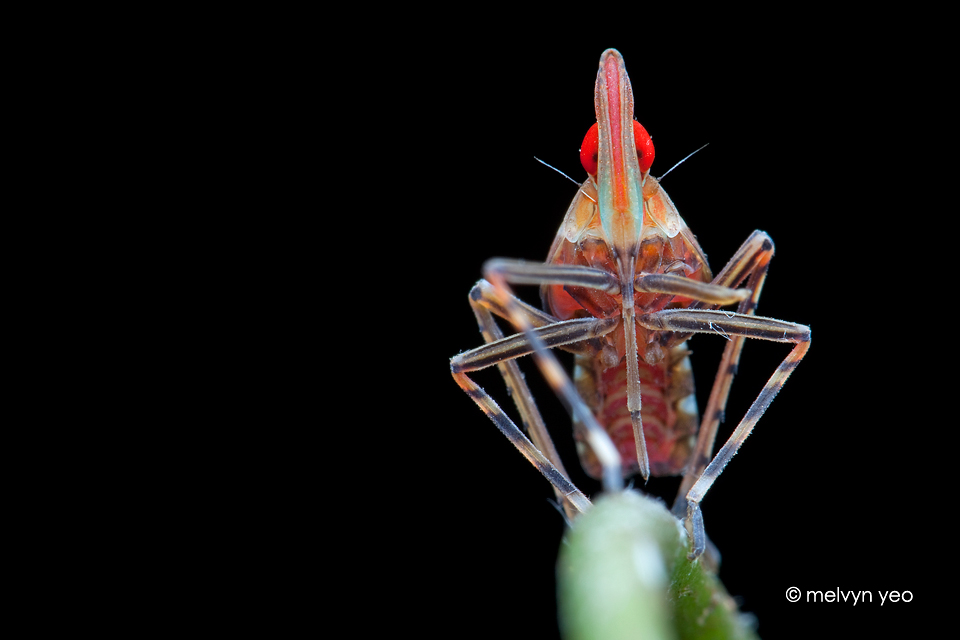ShopDreamUp AI ArtDreamUp
Deviation Actions

Wallpapers
If you love wallpapers in different styles, you are in the right place. We offer wallpapers that you have never seen anywhere before, (mostly for phones). Support my work by contributing to my tip jar. Help me stay motivated to publish more artwork so you can access exclusive artwork! Thank you.
$5/month
Suggested Deviants
Suggested Collections
You Might Like…
Description
Another planthopper nymph  Taken at night in Singapore.
Taken at night in Singapore.
Quote from www.missouribotanicalgarden.or…
Numerous species of leafhoppers and planthoppers are found in Missouri, and many of them have a broad host list (for example, the potato leafhopper, Empoasca fabae, has over 100 host plants). They feed on foliage and shoots of many different plant species by piercing the plant cells and sucking out the contents. The damage that results from feeding depends on the host plant and the specific hopper. Only a few species of hoppers transmit pathogens such as those that cause curly top virus and aster yellows. Adult hoppers are excellent short-distance jumpers when disturbed, and they can be pests when found in high numbers.
Symptoms and Diagnosis
Hoppers are agile insects that can move with equal ease either forwards, backwards, or sideways like a crab. The crab-like motion distinguishes hoppers from most other insects. In addition, they can hop to escape danger or to move to another host plant.
Feeding damage from some species causes small white spots (stippling) to appear on the upper leaf surface, usually beginning near the leaf midrib.
Stippled areas can unite into larger whitish blotches on mature leaves. With some plants, feeding damage causes a drying and yellowing (or browning) of leaf margins, and possibly the whole leaf. Some leafhopper species cause curling or stunting of terminal leaves with their feeding. Another sign of feeding is the presence of tiny varnish-like spots of excrement on the underside of leaves. Also, check under leaves for white, papery cast skins that remain from the molting process.
The lacebug is another insect that causes stippling from feeding and leaves dark droplets of varnish-like excrement on the underside of leaves. Distinguishing lacebugs from leafhoppers is easy:
Lacebugs have a lacy pattern on their upper side, they don't jump or run sideways, and they are about half as broad as they are long. Yet another pest that can cause stippling is the spider mite. Check under leaves for the webbing left by spider mites (leafhoppers don't leave webbing).
Quote from www.missouribotanicalgarden.or…
Numerous species of leafhoppers and planthoppers are found in Missouri, and many of them have a broad host list (for example, the potato leafhopper, Empoasca fabae, has over 100 host plants). They feed on foliage and shoots of many different plant species by piercing the plant cells and sucking out the contents. The damage that results from feeding depends on the host plant and the specific hopper. Only a few species of hoppers transmit pathogens such as those that cause curly top virus and aster yellows. Adult hoppers are excellent short-distance jumpers when disturbed, and they can be pests when found in high numbers.
Symptoms and Diagnosis
Hoppers are agile insects that can move with equal ease either forwards, backwards, or sideways like a crab. The crab-like motion distinguishes hoppers from most other insects. In addition, they can hop to escape danger or to move to another host plant.
Feeding damage from some species causes small white spots (stippling) to appear on the upper leaf surface, usually beginning near the leaf midrib.
Stippled areas can unite into larger whitish blotches on mature leaves. With some plants, feeding damage causes a drying and yellowing (or browning) of leaf margins, and possibly the whole leaf. Some leafhopper species cause curling or stunting of terminal leaves with their feeding. Another sign of feeding is the presence of tiny varnish-like spots of excrement on the underside of leaves. Also, check under leaves for white, papery cast skins that remain from the molting process.
The lacebug is another insect that causes stippling from feeding and leaves dark droplets of varnish-like excrement on the underside of leaves. Distinguishing lacebugs from leafhoppers is easy:
Lacebugs have a lacy pattern on their upper side, they don't jump or run sideways, and they are about half as broad as they are long. Yet another pest that can cause stippling is the spider mite. Check under leaves for the webbing left by spider mites (leafhoppers don't leave webbing).
Image size
960x640px 189.02 KB
Make
Canon
Model
Canon EOS 5D Mark II
Shutter Speed
1/125 second
Aperture
F/16.0
Focal Length
100 mm
ISO Speed
200
Date Taken
Nov 9, 2013, 2:23:14 AM
Sensor Size
6mm
© 2013 - 2024 melvynyeo
Comments6
Join the community to add your comment. Already a deviant? Log In
It closely resembles my Mother-in-Law cha cha cha dribblepussy































